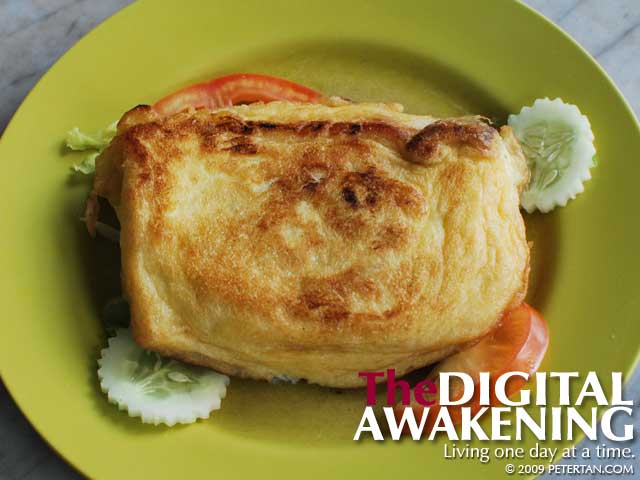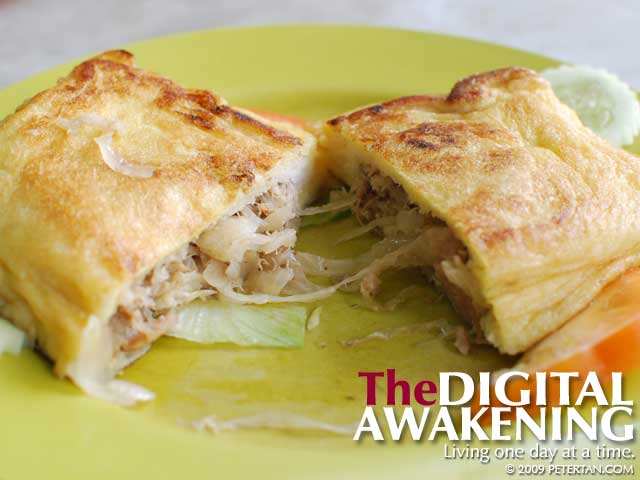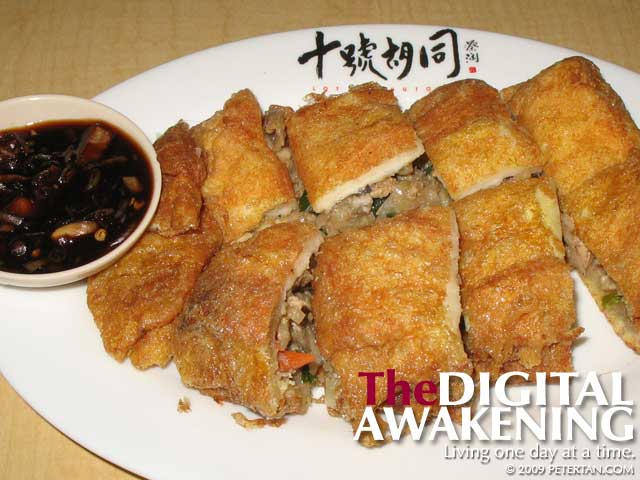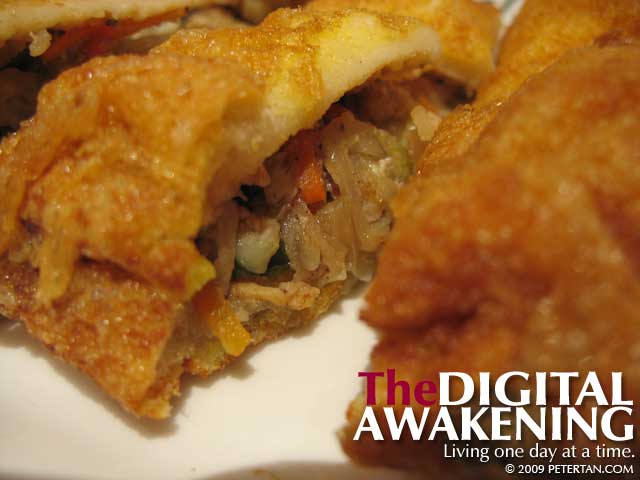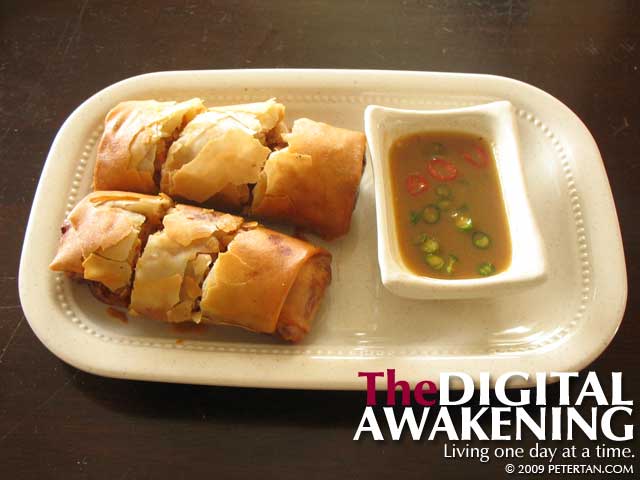Wuan had some work leave to clear in August. We decided to make trip to Penang again from 25th to 28th for another round of relaxation and local fruits and food. First order of the day we arrive was to catch up with Jenny, my former physiotherapist. We have not met since Wuan’s and my wedding dinner in 2009. After running through the list of food that we wanted to savour and whether the restaurants were accessible or not, we settled on Hainanese Delights Restaurant at the 1926 Heritage Hotel at Burmah Road.
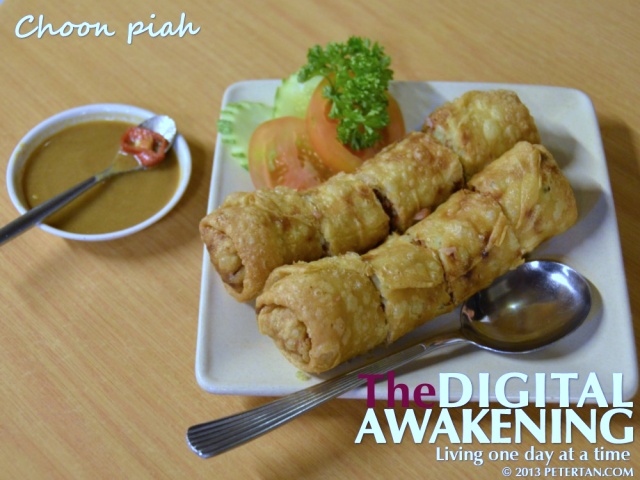
Choon piah is a Hainanese speciality of shredded vegetables, minced meat and crab meat spring roll that tastes even more heavenly when dipped into a localised version of Worchestershire sauce.
Photo by Wuan.
Hainanese cuisine in Penang is an eclectic mixture of Peranakan and British flavours. It takes a lot of work and ingredients to prepare just one dish like the choon piah or asam fish. As a kid, I only got to enjoy these local favourites whenever my parents hosted guests from outstation or overseas to the Loke Thye Kee Retaurant situated at the junction between Penang Road and Burmah Road or the Sin Hai Keng Restaurant opposite the Tanjung Bungah bus station. Both have closed down a long time ago.
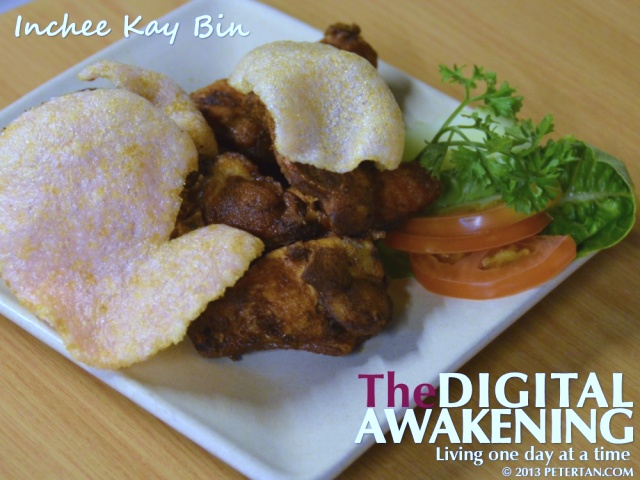
Inchi kabin may be spelt differently but nobody can deny that it tastes better than THAT fast famous food chicken and has been around even longer.
Photo by Wuan
Jenny came with Guan Aik, a friend and a charming young man, if I may add, and off we went to pander to my cravings. We ordered a bit too much as we struggled to finish whatever that was left towards the end and tried to push each other to eat just a little more in order not to let the food go to waste. And then we fought to pay for the dinner which Wuan and I lost out as both Jenny and Guan Aik said that we were their guests. Err, I am also Penang lang leh. Anyway, with our tummies filled to the brim, we went to Straits Quay for a look-see of the place as Wuan and I have never been there before.
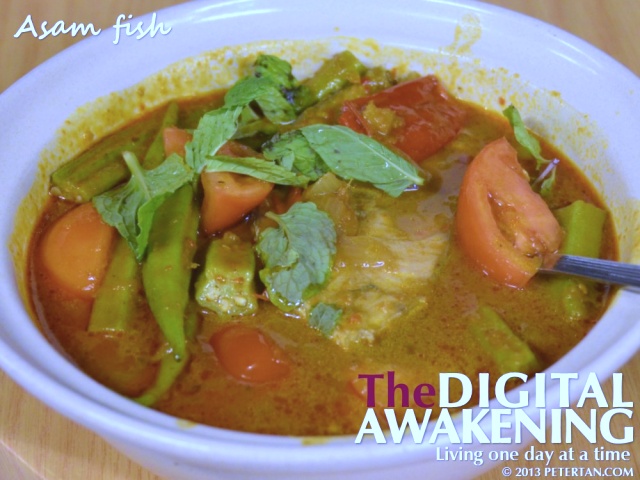
This asam fish with rice can already be a complete meal for me especially when it is served with nice and tender lady’s fingers.
Photo by Wuan
I like how Straits Quay was developed from the piece of reclaimed land that was left idle for the longest time. It was near to closing time when we arrived but there were still people strolling about at the promenade. Having taken in enough of the humid and briny air, we adjourned to a German bistro and bar for some refreshments where I did a short interview with Jenny for Breaking Barriers in The Borneo Post. It had been a wonderful evening that I wished could last a little longer but Wuan was already tired from the long trip from Kuala Lumpur. We called it a night with promises to meet up again the next time Wuan and I are in Penang.
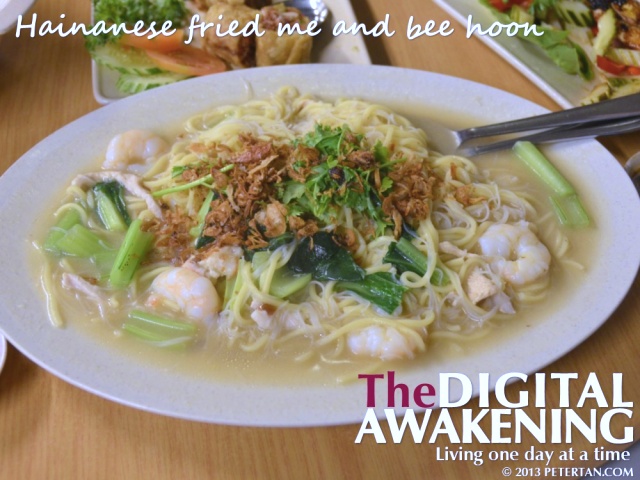
Hainanese fried noodles was a treat when I was young. It still is a treat now as there are very few restaurants that can cook this dish to the exacting standard that my taste buds approve of.
Photo by Wuan
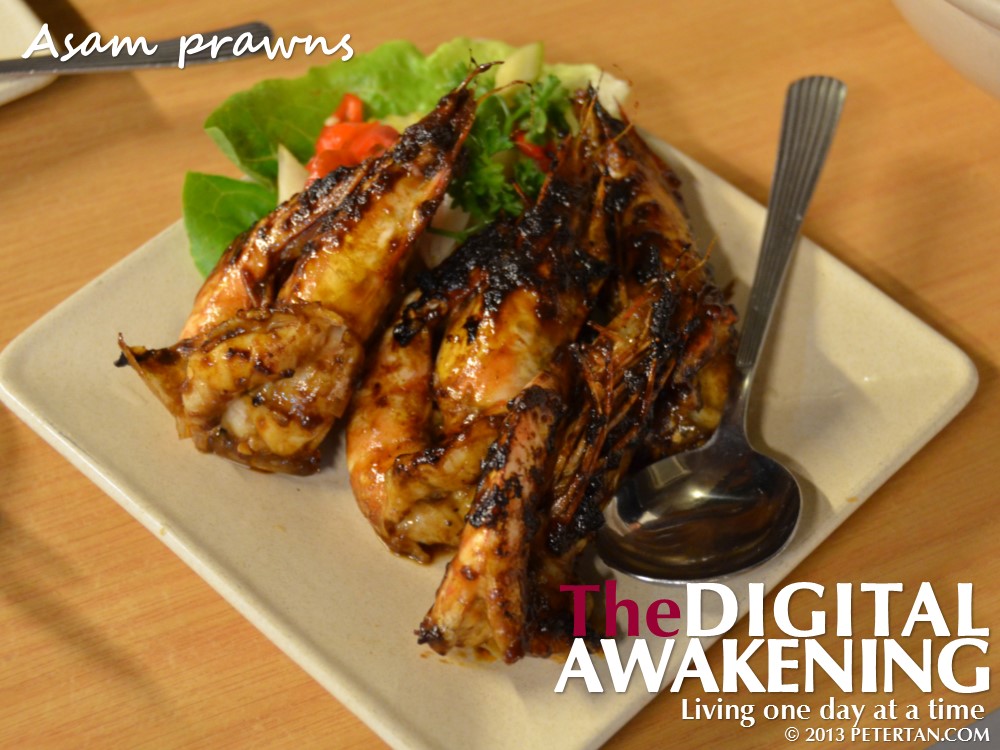
Asam prawns are best eaten with warm rice to bring out the fragrant aroma and sourish taste of tamarind, better still with nasi lemak.
Photo by Wuan

Lor han chai also known as Buddha’s Delight is a popular vegetarian dish stir fried in a gravy of red fermented bean curd.
Photo by Wuan
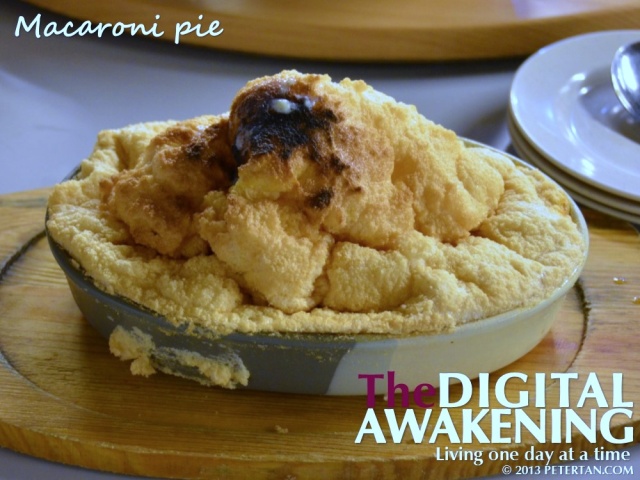
My first taste of the macaroni pie. It was cheesy and creamy, and too rich to my liking since I am on a low-protein diet.
Photo by Wuan

